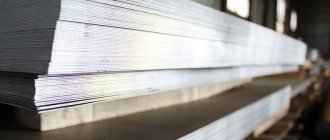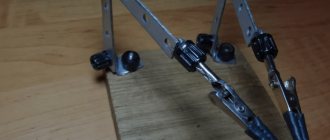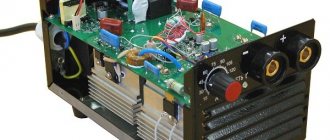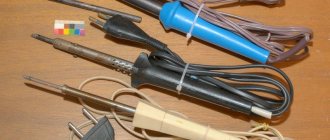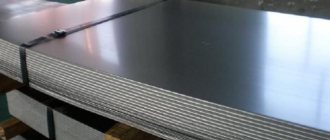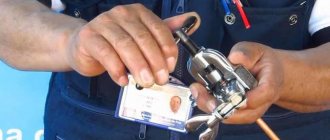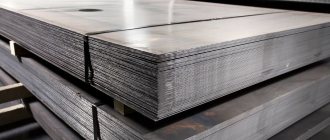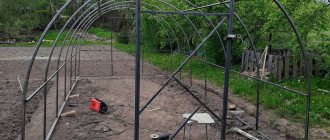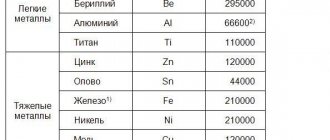Sheet metal rolling
Workpieces of this type are easy to process. As a result of rolling, the sheets can be given any shape: cylinder, cone, pipe, trench. During operation, the workpiece is passed between special shafts, is uniformly deformed and takes the shape of a cylinder. In this form it is suitable for further processing on the machine.
For our work, we use special bending rollers with different types of drive. Our technologies allow us to produce even non-standard products of large diameters.
Self-centering roller rotators INZT 10 E
|
offers its services for metal rolling using modern high-tech equipment.
The essence of this technological operation is the cold deformation of sheet materials on special machines along a given direction. During the rolling process of a sheet of metal, it passes or is rolled between several shafts and is bent to the required radius. We provide an integrated approach to solving a variety of customer technical problems - of any level of complexity and scale. Excellent equipment of the production site, the use of CNC machines and the skill of our specialists - all this serves as a guarantee of success and high quality of work.
What materials are suitable for rolling?
We work with steel alloys, such as stainless steel, non-ferrous metals, various types of ferrous metals, galvanized sheets, profiles and pipes.
How is the work going?
The conclusion of the contract is preceded by contacting our managers and creating an application. Drawings are required to work on the project. You can provide them yourself or entrust it to our masters. In the second case, you need to provide a choice:
- sketch;
- photograph of the product;
- technical task.
Please note that drawing creation is not included in the basic service.
The next stage is the conclusion of an agreement, which will fix the final cost of the work and the deadline for its completion. If the order is urgent, you can also indicate this, and we will reduce the work time as much as possible.
After this, the work of our specialists begins. We manufacture a product that meets the provided parameters. We use high-tech equipment and control production at every stage.
When metal rolling is completed, we deliver the finished product and you receive it.
Order our services using an application on the website or call our specialists by phone in Moscow +7(495)730-222-4, +7(985)540-01-00.
| 350089, Krasnodar, Dumenko st. 2, office 16, Adygea district, Enem village, st. Perova 46A |
| [email protected] |
We offer rolling of profile and sheet metal at competitive prices in Krasnodar, we carry out orders of any complexity for both serial parts and piece samples.
Rolling is the uniform deformation of various types of alloys under pressure or the operation of cold forming of metal products (sheet, profile metal, pipes, steel rod) in order to bring the products to a radial or cylindrical shape. Technologically, the process is a gradual drawing of metal in moving rollers on special equipment - rollers. Rolling can be used to process steel alloys, such as stainless steel products, non-ferrous metals, various types of ferrous metals, galvanized sheets and rolled profiles and pipes. For the bending process, workpieces of the following shapes can be used: steel strip, flat sheet, profiled sheet, channel, I-beam, angle, profile and round pipes, fittings, rods, etc.
- Sheet metal rolling
- Pipe rolling
- Advantages
- Rolling of cones
- Prices for rolling in Krasnodar
Read also: What is Columbus tool?
Our company carries out rolling of various types of metal, including:
- stainless steel;
- Cink Steel;
- non-ferrous alloys;
- ferrous metal products.
Sheet metal rolling
Sheet metal rolling is the uniform deformation of a steel sheet under pressure. Using this method, you can create both blank elements to be welded and joined into a solid structure, as well as finished products. The production of parts is carried out on modern equipment that meets new quality standards and the requirements necessary for work. The process is carried out using forging or bending rollers. A sheet of metal is passed between rollers and, under pressure, gradually takes on the required shape. Bending stainless steel sheets is a rather difficult process, since the main task is to preserve the properties of the sheet's protective coating.
This method is used to produce cylindrical products. Our company carries out rolling of sheets of stainless steel, galvanized steel, aluminum, etc. Processing of rolled sheets in this way is used for the subsequent production of intermediate forms with assembly into finished structures, such as tanks, boilers, containers, pipes of non-standard diameter.
Rolling is carried out on machines with large rounding radii. During the processing of a sheet on a machine, the metal is subjected to uniform deformation with a designated rounding radius, and as a result, the output is a cone or cylinder of sheet metal, depending on the specified rounding angles. Each machine has its own characteristics and limitations on the metal processed, such as thickness, dimensions and bending radius. Depending on the thickness of the metal at the output, the larger the radii of the rolls installed on the rollers should be, but an increase in the radius of the rolls will lead to a decrease in the minimum bending radius when rolling thin sheet metals. The rolling process is performed on special machines (sheet bending rollers).
We roll sheet steel with dimensions:
- width of bent sheet - up to 2000 mm
- sheet thickness - from 1 to 20 mm
- smallest rolling radius - 120 mm
Pipe rolling
Rolling of profile pipes is carried out by processing them on pipe bending or rolling equipment. The cost of services for bending profiles is formed depending on the characteristics of the metal used, the complexity of the order and the required number of products, since equipment is set up for the manufacture of each individual product.
Bending of profile pipe by rolling
One of the methods of cold metal processing is pipe rolling. Processing of profile metal is carried out on the simplest and most common three-roll pipe bending machines. On machines of this type, it is possible to bend profile metal from different types of steel: black, stainless steel, various alloys of non-ferrous metals, etc. The main mechanism that carries out the rolling itself is a unit consisting of three roller rolls, one of which is the driving one, or This function goes to the two outer rolls. The profile pipe is rolled through rollers and deformed to form a product with a given radius of curvature. Rolling allows you to produce either a bent section of pipe or a long bent profile of various lengths, up to the creation of a circular blank.
Read also: Natural circulation of water in the heating system
The process of bending profile metal itself is divided into two stages. The first is pre-tension to set the rounding angle, by creating pressure from the middle roll on the profile resting on the outer rolls, or vice versa, applying force from the outer rolls while resting on the middle one.
Rolling of pipe sections
The process is divided into three stages:
- The initial stage is rolling - expansion under the influence of temperature or mechanical force. The profile metal is placed in the hole, after which expansion begins, the first stage allows you to get rid of the gap between the pipe and the edge of the hole.
- The second stage - rolling consists of compacting the connection and forming a bend; this process requires the use of the greatest forces; at this stage, due to deformation, the geometry of the profile hole also changes, creating a tight connection.
- The third stage is flaring - at this stage the connection becomes completely sealed.
To roll pipes, our company uses three-roller pipe bending machines, which ensure an accuracy of bending radius of about 4% of the nominal size. The equipment used allows bending of profile metal along the required radius without the formation of defects on the inner wall of the workpiece. This equipment allows you to withstand a bending radius of up to 250 mm, as well as process other types of profile metal - channel, I-beam and angle.
Advantages of rolling
- ease of processing;
- preservation of metal properties;
- uniform deformation over the entire area of the workpiece;
- absence of cracks, creases, scratches, burrs and other defects on the internal plane of the finished metal product.
- processing of ductile metals is possible;
- large bending diameter;
- flexible in one direction,
Rolling of sheet metal cones
Rolling cones is usually more difficult than bending pipes, because... involves the use of four-roll machines, since three-roll machines do not have the accuracy necessary for such work. In addition, it is assumed that the operator of this machine has some experience. When using four-roll machines, the operator has the ability to draw sheet metal at idle speed; in this case, the equipment is used to unroll the sheet at an angle to the extreme side of the inclined roll. In the process of drawing a sheet between rolls, the metal is uniformly deformed and bends under a given radius without violating the technical characteristics of the metal. In this way, cylindrical or conical shaped products are produced.
The design of the four-roll machine helps to produce products, more accurately observing the bending radius; the rolled product is clamped between the rollers both from above and from below. The shells are processed with side rolls, and the edges are hemmed at the same time. Other improvements to the four-roll machine include an additional clamp to help reduce the amount of flat edge, the ability to bend sheet metal in one pass, and the ability to feed rolled metal horizontally.
During processing, the sheet is bent gradually along a radius specified by the machine operator and, as a result, the metal acquires a conical shape. Rolling machines have various technical characteristics that impose certain restrictions on the diameter of the products being processed, as well as on the thickness of the processed metal sheets.
Read also: Round wedge for an ax
With rolling equipment that meets the standards and machine operators with relevant experience, the company is able to produce conical products with a regular bend and a rolling angle of up to forty-five degrees.
Approximate cost of metal rolling
Manufacturing a pipe from a metal sheet - from 50 rubles per unit. The price of rolling a profile pipe along a designated radius is from 100 rubles per unit. The price of rolling cones is from 200 rubles for rolling one product. The cost of rolling a shell is from 50 rubles. per piece The cost of rolling a half-shell is from 50 rubles. per piece
Leave a request Ask a question
| Types of rolling | Price, rub.) | UNITS MEAS. | |||||||
| Rolling of sheet metal up to 1.0 mm thick | 500 | sq.m. | |||||||
| Rolling of sheet metal up to 1.2 mm thick | 600 | sq.m. | |||||||
| Rolling of sheet metal up to 1.5 mm thick | 700 | sq.m. | |||||||
The process of cold deformation of sheet material in a linear or radial direction is called rolling. To create the metal of the desired shape, rolling mills with three or four pressing shafts are used. After such treatment, the steel product does not lose its original properties and retains structural integrity and strength.
Manufacturing of shells
We provide services for the production of metal products from steel sheets up to 14 mm . On our CNC machine, made in Italy ROCCIA .
4-volt volks allow you to produce products of various shapes.
The shell is an open cylindrical or onic element of a metal structure (such as a rim, drum, ring, short pipe). The shells are made using the method. Sheet bending is carried out in rollers (sheet bending machine); thick sheet steel is deformed with preheating.
Shells are used in the construction, metallurgical, and oil refining industries. We receive the largest number of orders for the production of shells from machine-building enterprises.
Shells are produced for further use:
- in welded metal structures: apparatus, pipes, boilers, tanks, silos, reservoirs, containers;
- as a workpiece: steel bandages, flanges, bandage rings, crane drums, brake drums, conveyor drums, rollers, pipes, sub-bandage shells of rotary kilns and other elements of non-standard industrial equipment;
- in casings of highways and structures of supports of bridges, water pipelines, sewers, crossings;
- for the manufacture of industrial chimneys, ventilation pipes, flues.
- parts of process pipelines: welded bends, tees, reducers, stainless steel pipes, compensators, pipeline supports.
- Shell rolling, Aluminum sheet rolling, Aluminum rolling, Aluminum sheet rolling, Rolling plant, Conical rolling, Sheet metal cone rolling, Cone rolling on rollers, Cone rolling, Sheet rolling, Sheet radius rolling, Sheet rolling service, Sheet rolling price, Sheet rolling, Sheet material rolling, Sheet metal rolling, Sheet metal rolling Moscow, Sheet metal rolling price, Sheet steel rolling, Metal rolling, Metal rolling Moscow, Metal rolling price, Stainless steel rolling in Moscow, Shell rolling, Steel rolling, Steel sheet rolling 14mm cone on rollersRolling of thick sheet metal, Rolling of thick sheet metalRolling of thick-walled shells, Rolling of stainless steel pipes, CNC rolling, Bending of shells, Shell factory, Shell preparation, We will make shells, Shells production, Shells production from sheet steel, Metal shell production, Conical shell , Metal shells, Shell pipes, Sheet shell, Sheet steel shell, Large diameter shell, Well shell, Buy shell, Buy shell price, Stainless steel shell, Shell production, Thick-wall shell, Shell price, Manufacturers of shells, Production of shells from sheet , Steel shell, Sheet rolling machines, Sheet metal rolling cost, Sheet metal rolling services, Rolling services, Metal rolling services, Rolling services Moscow, Cylindrical shell.
Sheet metal rolling technology.
The welding and assembly shop has more than ten units of rolling equipment, including a three- and four-roll bending machine that allows bending sheets of 09G2S steel up to 3000 mm long and up to 14 mm thick. In this case, the minimum internal diameter of the resulting workpiece is 350 mm. The capabilities of the equipment make it possible to roll the sheet into various shell shapes: cylindrical, conical, spherical. Sheet metal is cut on a gantry gas-plasma metal cutting machine. Shell welding operations are carried out using support roller rotators, welding positioners and manipulators. Welding of longitudinal and circumferential seams can be performed using semi-automatic submerged arc welding units. Thermal equipment is represented by gas furnaces for normalizing and heating the workpiece. In accordance with the requirements for product quality and technical specifications of the customer, the company carries out 100% ultrasonic inspection of welds. At the customer's request, the company can machine the ends of the shell for welding on lathes and rotary lathes.
Moscow, St. Petersburg, Novosibirsk, Yekaterinburg, Nizhny Novgorod, Kazan, Chelyabinsk, Omsk, Samara, Rostov-on-Don, Ufa, Krasnoyarsk, Perm, Voronezh, Volgograd, Krasnodar, Saratov, Tyumen, Togliatti.
Features and benefits of the service
Metal rolling ensures uniform deformation. The formation of scratches, gouges and dents on the surface of the sheet is excluded. High manufacturing precision is achieved. The mechanical loads of the rollers are evenly distributed over the entire friction zone.
The final product of rolling is open cylindrical elements or spatial conical products. This method has many other advantages:
- you can process steel of different thicknesses (the maximum radius of curvature directly depends on this indicator);
- work is performed without large expenditures of energy;
- it is possible to achieve a uniform gloss;
- You can deform stainless, galvanized and aluminum materials.
Sheet metal rolling can be done at different speeds. The higher they are, the less force is exerted on the contact surface of the product.
Making cones
If you are interested in this information or have any questions, please call
The Ural Special Designs Plant produces cones that are used to transition a pipeline from one diameter to another. They are also used as part of welded containers and other structures in production. They are a steel cone cut on the narrow side.
Manufacturing stages
When placing an order, the client indicates the diameters of the ends and the height of the finished product. With this data, the production of the cone begins. A calculation of linear dimensions and a cutting drawing are made. The correct shape of the finished part depends on their accuracy.
Cutting blanks
For the manufacture of cone shells, rolled steel sheets are used. They can be either solid (with one seam) or welded from several segments in accordance with GOST R 52630-2012. If the blanks consist of one piece in the shape of a horseshoe, they cannot be larger than a certain size, limited by the sheet format.
The maximum size of standard rolled sheets is 200x600 cm. If necessary, special rolled sheets are used - 500x1200 cm. From it you can cut a blank for a cone with a large hole diameter of 380 cm and a height of 300 cm. The cutting program is entered into the CNC of the machine. Next, plasma or laser cutting of the metal is carried out, followed by processing of the ends. Oxygen and arc cutting can also be used.
Rolling of blanks
Cone shells can be made in several ways:
- cold rolling;
- hot rolling;
- cold stamping.
For cold and hot rolling, a sheet bending machine (roller) is used. The workpiece is passed between several rollers of different diameters. For emphasis, an end roller must be installed on the roller, limiting the axial shift of the sheet. In this case, the minimum size of the circle determines the diameter of the upper roller of the machine, and the maximum can be any. Wall thickness is also limited by the capabilities of the machine. The height of the processed shell depends on the length of the rollers.
Hot rolling is used when the metal used does not have sufficient ductility and can be deformed during cold working. It is heated with gas burners and only after that it is fed to the sheet bending machine.
Cold stamping
Using a hydraulic press, seamless conical shells are stamped from steel sheets. The desired shape is achieved in several steps. This technology allows you to simultaneously, using special equipment, add the necessary additional standard sizes to the correct cone.
Welding
After cold and hot rolling, curved steel plates are obtained, from which cones must be welded. Any welding is preceded by processing (cutting) of the metal ends. This operation is carried out immediately after cutting.
The bent workpieces are welded into a cone using DIGITECH VISION automatic welding machines. To maintain the arc and avoid straight sections on the joining lines, special joining strips are used.
Upon completion of welding work, the seams are cleaned and checked:
- ultrasound;
- radiographically.
Control measurements of the resulting cone are made.
Additional processing
Design documentation and GOST R 52630-2012 require additional impacts on finished products. For example, heat treatment gives the shells the properties they need. Mechanical operations, namely, processing of the ends for welding the bottom, fitting, outlet and other parts, are carried out on cones used in the manufacture of containers and apparatus.
All work is carried out in accordance with the technical specifications and GOST requirements, which guarantees high quality and long-term trouble-free operation of the cone shells.
Rolling process
If the steel thickness is more than 7 mm, it is preheated to create the necessary ductility. The procedure itself can be implemented in several variations: with a screw, longitudinal or transverse feed.
First, a metal sheet is brought to the gripping area of the machine. Then adjust the size of the gaps between the rolls. The direction of deformation is set and rolling is performed. To achieve a more uniform radius of curvature, the edges of the product are rolled up. All deformations occur due to torque and not mechanical force. You can buy ready-made bent materials at an affordable price in Moscow. The optimal prices for rolling services are set by WENSA.
Description
Rolling technology
Rolling
- this is an operation in which sheet material is deformed under the pressure of powerful rollers on special equipment - hydraulic rollers to a certain radius. When rolling between rollers, a metal sheet is formed into a cone or cylinder with specified parameters.
In simple words, rolling is the main technological operation in the production of cylindrical and conical shells. In the entire production chain, it is the main formative process.
After molding the shell, our company has the ability to perform welding and ultrasonic inspection of the welded joint, as well as perform mechanical processing of the ends of the shell (chamfer).
- S max - 80 mm;
- L max – 2500 mm;
- R min – 380 mm;
- D max – 6,500 mm;
Pipe rolling
Price list for pipe rolling
| Rolling of profile pipes | from 8 to 80 mm | from 148 RUR |
| Rolling of large diameter pipes | from 8 to 80 mm | from 148 RUR |
| Rolling of copper pipes | from 8 to 80 mm | from 148 RUR |
| Rolling of steel pipes | from 8 to 80 mm | from 148 RUR |
| Rolling of aluminum pipes | from 8 to 80 mm | from 148 RUR |
| Rolling of stainless steel pipes | from 8 to 80 mm | from 148 RUR |
